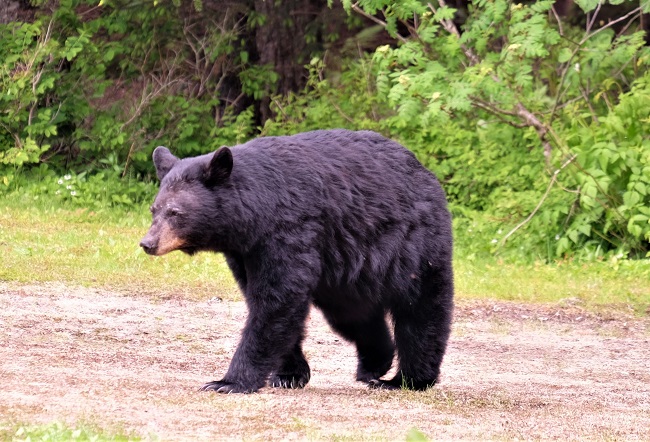
The American black bear (Ursus americanus) has long been an iconic symbol of North America’s wilderness. With its majestic presence and ecological significance, the black bear plays a crucial role in maintaining the health of forest ecosystems. Over the past several years, the population of American black bears has experienced a notable resurgence, marking a triumph for wildlife conservation efforts.
During the 19th and early 20th centuries, the American black bear faced significant challenges that led to a decline in its population. Factors such as unregulated hunting, habitat loss, and the absence of effective conservation measures pushed them to the brink of extinction. However, concerted efforts made by conservation organizations, wildlife management agencies, and public awareness campaigns helped reverse this trend, offering a ray of hope for the species.
Conservation Measures
Various initiatives were undertaken to protect and restore black bear populations. Hunting regulations were enacted, limiting the number of bears that could be harvested annually and imposing stricter penalties for poaching. These regulations aimed to stabilize the population by ensuring sustainable hunting practices.
Habitat Restoration
Preserving and restoring suitable habitats have been crucial for the recovery of the American black bear. Protected areas, such as national parks and wildlife refuges, have provided safe havens for bears to flourish. In addition, reforestation projects and the conservation of critical corridors have created interconnected landscapes, facilitating movement and gene flow between bear populations.
Public Education
Raising public awareness about the importance of coexisting with black bears has played a significant role in their population growth. Education campaigns have emphasized the need to secure garbage and food attractants, reduce human-bear conflicts, and employ non-lethal methods for bear management. As a result, communities have become more bear-conscious, reducing conflicts, and promoting peaceful cohabitation.
Natural Recovery and Adaptability
The remarkable adaptability of the American black bear has also contributed to its population growth. Black bears are generalist feeders and can thrive in various ecosystems, ranging from forests to wetlands. Their ability to adapt to changing landscapes and dietary options has allowed them to expand their range and recolonize areas from which they were previously absent.
Population Growth
Thanks to the combined efforts of conservation initiatives, the American black bear population has experienced a resurgence in recent years. Across many states, bear sightings have become more common, and their distribution range has expanded. While estimating the exact population size is challenging, the recovery of the black bear population is considered a conservation success story.
Implications
The growing black bear population presents both opportunities and challenges. Ecologically, it signifies a healthier forest ecosystem as bears play a crucial role in seed dispersal and controlling herbivore populations. Economically, the resurgence of bears has boosted nature-based tourism, attracting visitors interested in wildlife observation. However, it also requires continued vigilance in managing human-bear interactions and preventing conflicts, especially in areas where human development encroaches upon bear habitats.
The recovery of the American black bear population serves as a testament to the power of conservation efforts and the resilience of nature. It demonstrates that with effective measures, wildlife populations can rebound from the brink of extinction. The growing black bear population is a cause for celebration, but it also necessitates responsible management and increased awareness to ensure the harmonious coexistence of humans and these magnificent creatures for generations to come.
10 Fun Facts About Black Bears
Despite their name, American black bears can come in a variety of colors, including black, brown, cinnamon, and even blonde. This color variation is influenced by genetics and habitat.
American black bears are excellent climbers and swimmers. They are agile climbers and can easily ascend trees to escape danger or to forage for food. Their swimming abilities allow them to cross rivers and lakes in search of new territories or food sources.
Black bears have an exceptional sense of smell, which is seven times stronger than that of a bloodhound. They use this keen sense to locate food from a distance, even if it’s hidden or buried.
American black bears are omnivores, meaning they have a diverse diet that includes both plant matter and animal protein. They are known to consume berries, nuts, grasses, insects, fish, small mammals, and occasionally carrion.
During winter, black bears enter a state of torpor, which is a lighter form of hibernation. While in torpor, their body temperature drops slightly, and their metabolism slows down. They do not eat or drink during this time but can wake up if disturbed.
Black bears are known for their exceptional strength. They are capable of overturning large rocks and fallen trees to access food sources or create dens.
Female black bears typically give birth to one to four cubs during the winter denning period. The cubs are born blind and hairless, weighing only about 8 to 12 ounces. They remain with their mother for about 1.5 to 2 years before venturing off on their own.
American black bears have an incredible memory and can remember food sources and locations for several years. This ability helps them locate reliable food supplies during different seasons.
Black bears are typically non-aggressive toward humans. They often display defensive behavior when they feel threatened or when their cubs are in danger. It’s important to respect their space and give them a wide berth if encountered in the wild.
American black bears are the most common bear species in North America, with a range that extends across much of the United States and Canada. Their adaptability and resilience have allowed them to thrive in a variety of habitats, including forests, mountains, swamps, and even urban areas.
Related Articles & Free Email Newsletter Sign up
Bobcats Range from Southern Canada to Northern Mexico
Snapping Turtles are One of the Largest Freshwater Turtles in North America


Comment here